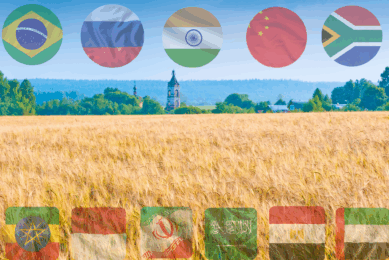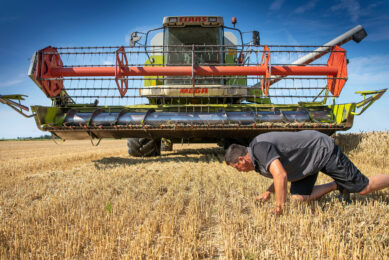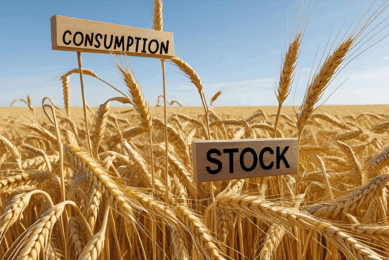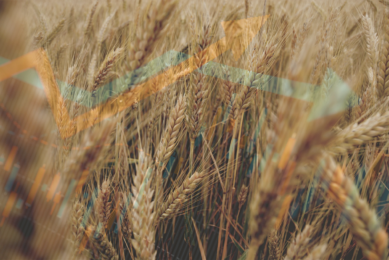Case study: Australia’s pasture growth means less demand for feed
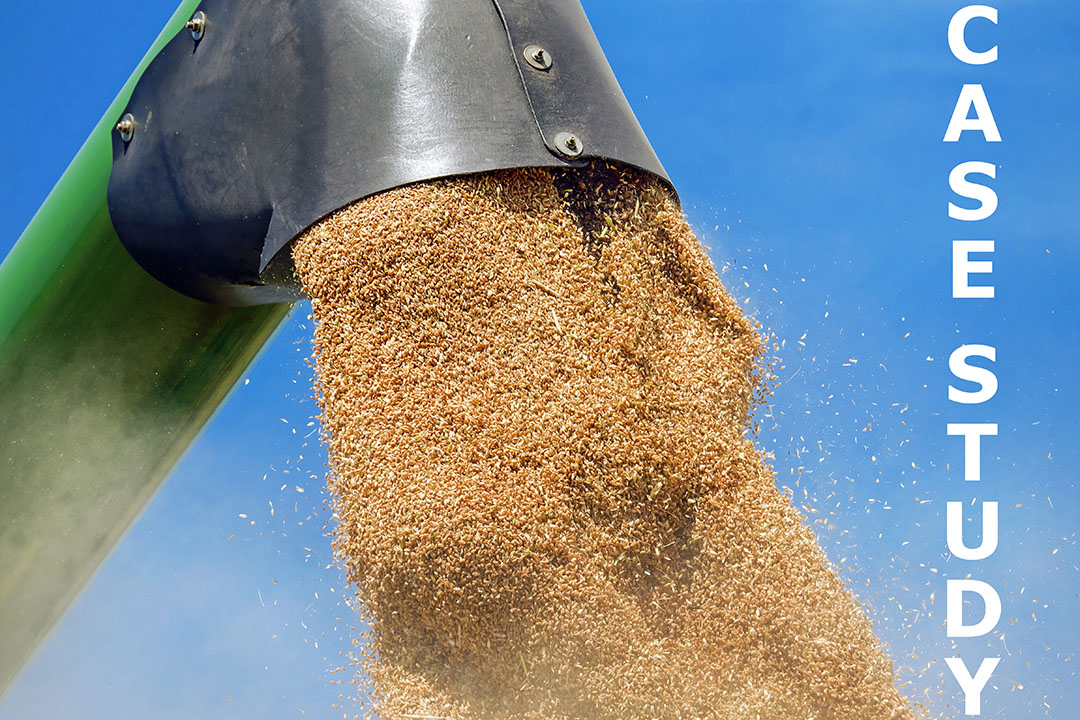
Widespread rainfall in early 2020 has created the prospect for a good start to the grain sowing season in Australia. This follows 2 years of below-average grain crops as a result of drought. For wheat, production is forecast to be more than 50% greater than the previous year.
The wheat industries in Western Australia and South Australia are almost completely export focused with typically more than 85% of the wheat production in these 2 states destined for exports. This is a result of limited domestic consumption of wheat (for intensive livestock production) and proximity to export ports.
Eastern wheat growing regions such as New South Wales and Queensland account for most of the feedlots in Australia and only about one-third of the wheat grown in these states is exported. Because of robust domestic demand there has been a very strong increase in the construction of on-farm storage, and total storage (bulk and on-farm) in these regions now greatly exceeds typical harvest volumes.
Victoria is the other major wheat-producing state with some milling and wheat feed consumption, but also strong exports.
Rebound for wheat production
Due mainly to an increase in area harvested as well as improved yields, MY 2020/21 wheat production is forecast to rebound after 2 years of drought-impacted crops and rise to 23 MMT. This is more than a 50% increase from MY 2019/20 of 15.2 MMT. Area harvested is forecast to expand to 12.1 million hectares in MY 2020/21 from 10.1 million in MY 2019/20.
Covid-19 weakens Australian dollar
The outbreak of Covid-19 is not expected to have a major impact on fall grain sowing, although the weakening of the Australian dollar has increased the price of some inputs. Wheat planting is expected to begin in late April, with harvest typically between November and January.
 Covid-19 Up-date
Covid-19 Up-date
What impact is the pandemic having on the global animal feed sector and how are they dealing with it.
Lower demand for on-farm feeding of grain
Australian consumption of wheat is forecast to fall in MY 2020/21, primarily as a result of less expected feed use. The multi-year drought had a major impact on the livestock industries as the lack of pasture boosted feeding of grain both on-farm, and a sharp expansion in the number of animals at feedlots. Cattle at feedlots reached a record level at the end of 2019.
Plentiful rains in early 2020 has boosted farmer confidence in pasture growth, and the livestock industry has begun a period of herd rebuilding, which is causing a fall in the number of animals at feedlots, as well as less need for on-farm feeding of grain. This is expected to result in lower levels of wheat for feeding both in MY 2019/20 and MY 2020/21. Although in the short-term there is expected to be a drop in wheat feed use, the long-term trend is for growth as Australian beef exports are increasingly “grain-fed” or “grain-finished”.
Greater export availability of wheat
Australia is typically between the 4th and 6th largest wheat exporter in the world. Following 3 straight years of falling exports, Australian wheat exports in MY 2020/21 are forecast to rebound to 14.5 MMT, from only 8.2 MMT in MY 2019/20. Higher production coupled with reduced feed demand would allow for greater export availability. Exports are also likely to be supported by a continued weak Australian dollar compared to the US dollar.
Global feed industry case studies
Taking a deeper look into animal feed production worldwide
Barley feed consumption expected to fall
Barley production for MY 2020/21 is forecast at 9.4 MMT – 600,000 MT above MY 2019/20. As with wheat, barley feed consumption is expected to fall in MY 2020/21 as a result of significantly better rainfall and pasture growth. The MY 2019/20 feed consumption estimate is unchanged, and total barley feeding is expected to be slightly higher than the previous year as strong wheat prices have caused the feed industry to switch to more barley use.
Sorghum feed use on the rise
MY 2020/21 sorghum production (to be harvested beginning in March 2021) is forecast to rebound to 1.4 MMT from the very low level of 350,000 MT in MY 2019/20, the lowest level in 50 years due to drought.
Although total grain feed consumption in Australia is expected to fall next year, sorghum feed use is expected to rise. This is due to the combination of a larger sorghum crop, coupled with sorghum growing areas being near key livestock production areas and feedlots.




